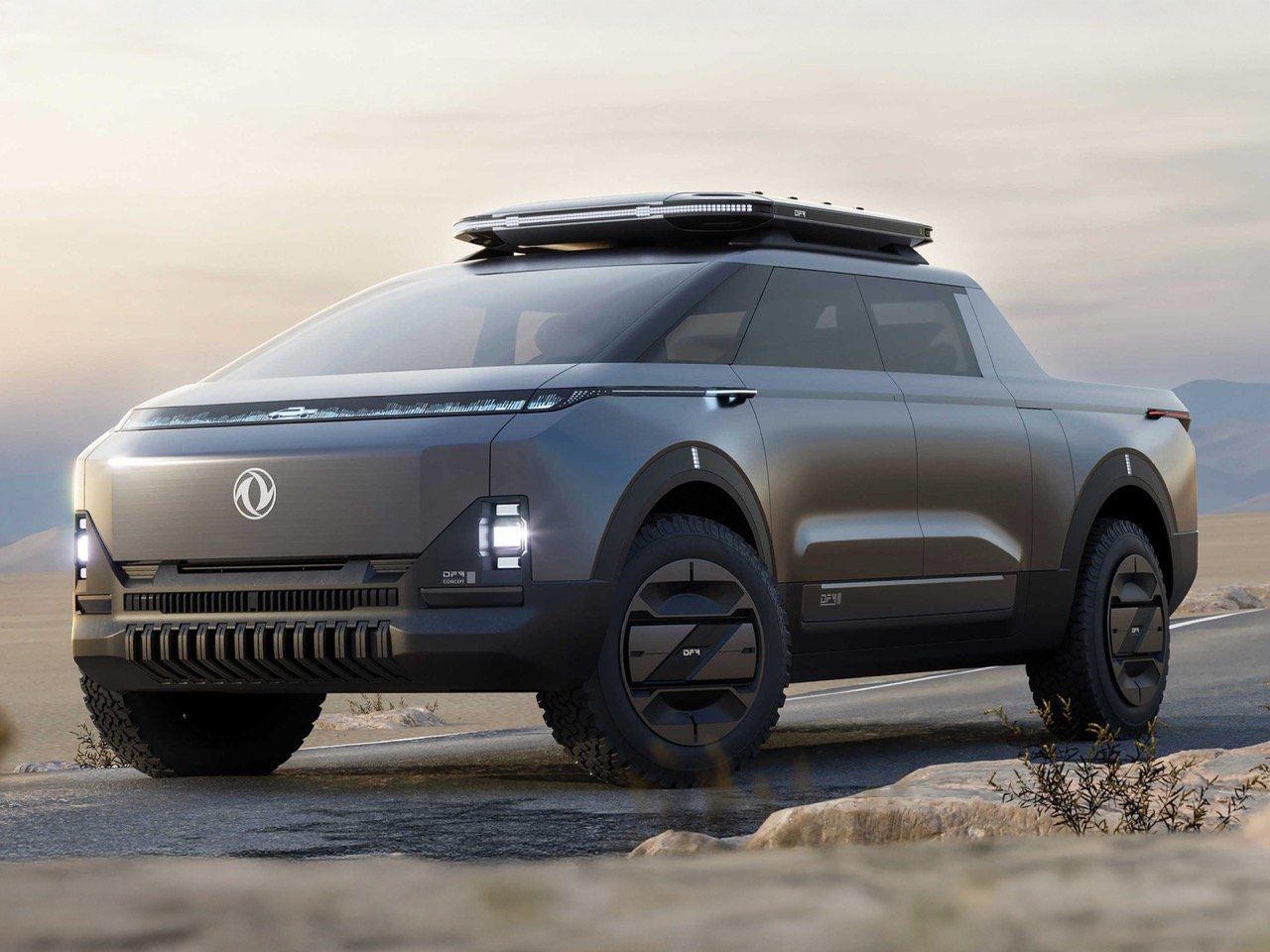Crab motion, steer-by-wire, full-wheel steering, removable appliances, and an energy-harvesting roof panel. Dongfeng’s E-Truck reads less like a traditional pickup spec sheet and more like a wish list from someone who actually uses vehicles for multiple, contradictory purposes. The 2025 Red Dot Best of the Best winner tackles the pickup truck’s biggest limitation: rigidity. Built on Dongfeng’s skateboard chassis and wrapped in a minimalist stainless steel body, it’s designed to morph between work mode, leisure mode, and emergency response mode without requiring you to own three separate vehicles. It’s the kind of concept that makes you realize how much we’ve accepted compromise in the truck world, simply because that’s how it’s always been done.
The E-Truck is apparently China’s first concept pickup to win Red Dot’s top honor, and while that’s noteworthy from a national pride angle, what matters is that Dongfeng actually earned it. This thing solves real problems. The design team, led by Zhang Yongliang and Cai Qiming with a nine-person in-house crew, didn’t just slap some LED strips on a conventional truck body and call it futuristic. They rethought the entire proposition, starting with that skateboard platform and working outward to create something that genuinely functions differently depending on context. The one-button mode transition sounds like marketing fluff until you see what it actually does: the rear bed cover flips up to form a small tent in SUV mode, transforming the cargo area into sheltered space. French doors on the truck bed give you unconventional access angles, and the whole setup accommodates removable modules like stereos, a refrigerator, and other gear that slot in and out based on what you’re doing that day.
Designer: Dongfeng Motor Corporation
The exterior is where Dongfeng’s confidence really shows. That stainless steel metal paint finish gives the truck an industrial, almost utilitarian aesthetic that feels deliberately anti-macho compared to the chrome-laden aggression most American pickups lean into. Full-width LED strips front and rear provide the sci-fi visual punch without looking like they’re trying too hard, and the minimalist surfacing keeps things clean. There’s a solar panel integrated into the roof, which addresses one of the biggest anxieties around electric adventure vehicles: what happens when you’re nowhere near a charger? Dongfeng’s answer is simple. You harvest your own energy and reduce dependence on infrastructure. It’s a feature Rivian should have prioritized from day one instead of making it an afterthought accessory.
Inside, the E-Truck goes full software-defined vehicle with a wraparound digital display that stretches across the entire dashboard, plus a floating center tablet. The steering wheel is rectangular, which some people will hate and others will find ergonomically superior once they adjust. What matters is the multi-dimensional environment-sensing HMI design, which adapts the interface based on context. You’re not navigating the same menus whether you’re in work mode hauling equipment or camping mode setting up for the night. The tech actually responds to what you’re doing, which is how all vehicle interfaces should work but rarely do because legacy automakers are terrified of complexity.
The real party trick is the mobility tech. Full-wheel steering and crab motion put the E-Truck in the same conversation as the GMC Hummer EV, which popularized the feature for tight maneuvering and diagonal movement. Steer-by-wire eliminates the mechanical steering column entirely, replacing it with electronic controls that allow for more flexible packaging and theoretically better precision. Combined with the skateboard chassis’s inherent flexibility, you get a vehicle that can navigate tight job sites, parallel park in absurdly small spaces, and handle off-road obstacles with more finesse than traditional four-wheel steering setups. Dongfeng didn’t release exact specs on battery capacity or range, because this is still a concept, but the modular approach and solar augmentation suggest they’re thinking beyond the “bigger battery equals better truck” mentality that dominates current EV development.
What strikes me most is how the E-Truck makes Western competitors look weirdly conservative. Tesla’s Cybertruck is polarizing but ultimately still a pickup truck with a weird body. Ford’s F-150 Lightning is a solid electrification of an existing formula. Rivian comes closest with its adventure-focused modularity, but even the R1T doesn’t go as far as Dongfeng in questioning what a utility vehicle should be. The E-Truck suggests a future where your vehicle is a platform that genuinely adapts rather than a fixed tool you’ve learned to use in creative ways. Whether Dongfeng can actually build this thing at scale and make it affordable is a different question entirely, but as a design concept, it’s doing exactly what Red Dot awards are supposed to recognize: showing us possibilities we didn’t know we wanted.
The post This E-truck Transforms Into a Solar Camper With One Button, and That’s Not Its Best Feature first appeared on Yanko Design.

